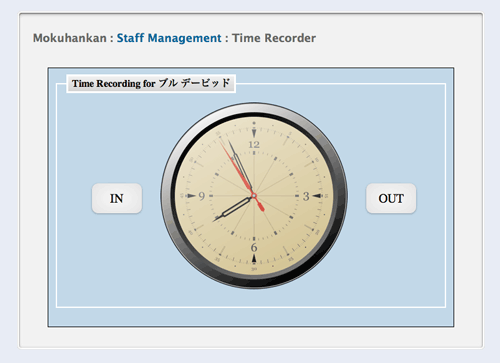Time ladies, please!
We had a trio of visitors here yesterday afternoon, in a pattern that has become quite common over the years - a magazine editor, with a writer and photographer in tow. They were here to do their research for a story on our workshop that they are planning for a children's book to be published this fall. (I'm not sure of the exact content; I think it's perhaps intended to be a book that shows people doing all sorts of 'work', and they want to include more than just the typical 'fireman, doctor, policeman' kind of variety ...)
The visit was of course pre-arranged, but when they arrived, and saw that two of the workbenches in the printing room were unoccupied the editor asked me, "Will those people be arriving soon? We would like to have photographs showing everybody at work."
I had to reply in the negative, and in fact told him that he was lucky that he caught us at a moment when two of the four benches were being used. It was getting towards mid afternoon, and getting close to 'going home' time for schoolkids, so one of the two women still working would also be leaving soon.
He was a bit surprised about that. "Umm ... leaving work? At three o'clock?"
I explained to him that we work on a 100% Flextime routine here; there are no pre-determined working hours at all, and these women are free to make their own schedules. In all other traditional workshops I have visited, the printers are slaves at the benches - because once a printing job has started, the paper must be kept moist right to the end of the multi-colour process, for fear of developing mold. The idea of leaving early, or missing a day, is inconceivable to them.
We get around this by freezing our printing paper every night (wrapped tightly to preserve the moisture), so our workers have neither the daily pressure to work late, nor the requirement to work straight through until each job is done. If we had to work under such strict requirements, not one of the women working here would be able to continue this employment. The printing paper is not affected adversely by the repeated freezing cycles, and I believe our finished prints are far more mold-free than those from workshops where they try to do it all in one long stretch, in a 'race to the finish' before visible mold begins to form.
In any case, as I said, we have a system in place where the people here completely choose their own working schedule, each of them checking a 'job board' on the wall and making reservations for one of the benches for the days they wish to use it.
All of this though, is about to undergo a major change; we will be opening a retail space in Asakusa later this year, and will thus have pre-determined opening hours. At least some of our workers are now going to have to start sticking to an assigned working schedule. The general 'floor staff' will need to work in shifts, the Print Party leaders will have to be present at the appointed times, and even the printers will need to make sure that at least some of their working time overlaps with the store hours, so that the customers will have a chance to see printers at work, something that we feel will be major draw for our shop.
So our new shop manager Ishikawa-san is building a system to control the assignment of workers to the required time slots, and I am developing software to help her manage it efficiently. The first part of this is now being tested, greeted with groans from all the staff members when they saw it.

Yes, we now have a time recorder installed on the workshop computer, and they are now all 'clicking in' (I can't say 'punching in') when they get here each time.
We're not about to become totalitarian about this, and the women among our staff who have family responsibilities will of course still enjoy a lot of freedom while choosing their hours; we couldn't operate any other way.
I suppose that this sort of structure is a necessary accompaniment to the metamorphosis from a little basement workroom to being a 'major retail presence in a global capital city'. What other changes are 'in store'?
Story #448, July 27, 2014

